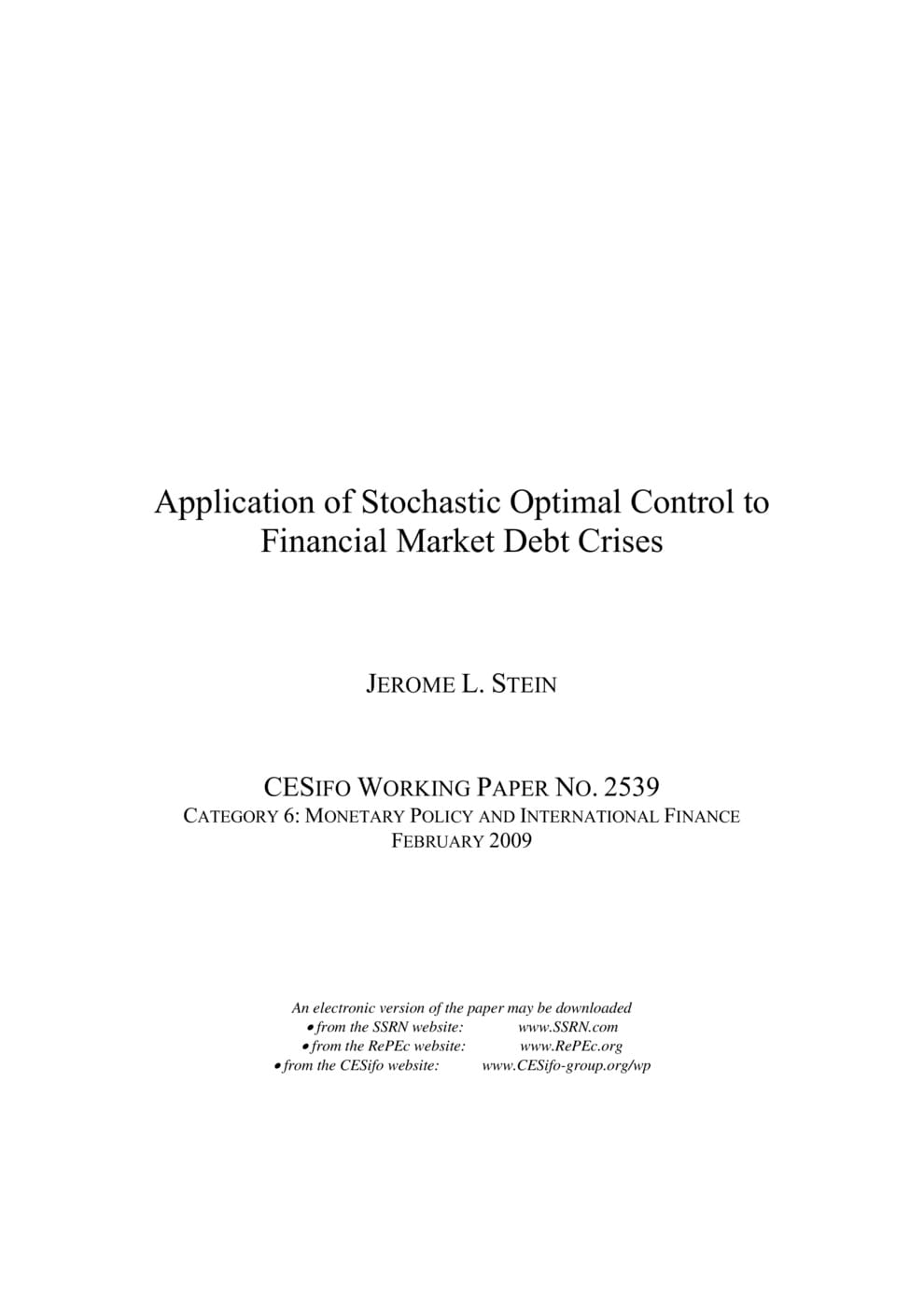Application of Stochastic Optimal Control to Financial Market Debt Crises
CESifo, Munich, 2009
CESifo Working Paper No. 2539

This interdisciplinary paper explains how mathematical techniques of stochastic optimal control can be applied to the recent subprime mortgage crisis. Why did the financial markets fail to anticipate the recent debt crisis, despite the large literature in mathematical finance concerning optimal portfolio allocation and stopping rules? The uncertainty concerns the capital gain, the return on capital and the interest rate. An optimal debt ratio is derived where the drift is probabilistic but subject to economic constraints. The crises occurred because the market neglected to consider pertinent economic constraints in the dynamic stochastic optimization. The first constraint is that the firm should not be viewed in isolation. The optimizer should be the entire industry. The second economic constraint concerns the modeling of the drift of the price of the asset. The vulnerability of the borrowing firm to shocks from the capital gain, the return to capital or the interest rate, does not depend upon the actual debt/net worth per se. Instead it increases in proportion to the difference between the Actual and Optimal debt ratio, called the excess debt. A general measure of excess debt is derived and I show that it is an early warning signal of the recent crisis.
Monetary Policy and International Finance